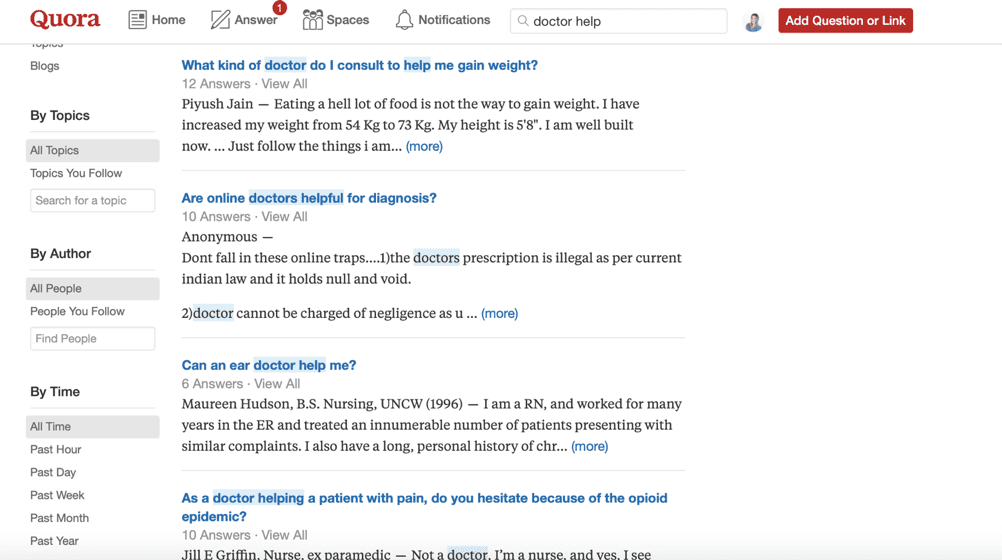The number of people using the internet to source a doctor, dentist or hospital, or even answer a simple health query, is on the rise
Expanding the reach of your business via digital marketing is a no-brainer, which is why just about every modern company follows a tried-and-tested formula built around ads, analytics and social media. Having said that, different approaches are required depending on a slew of factors including industry, budget, location, audience demographics and personnel.
In this blog post, I want to focus on just one type of consumer-facing business – a medical practice – and share some of my top tips for maximizing digital marketing. After all, the number of people using the internet to source a doctor, dentist or hospital, or even answer a simple health query, is on the rise. Embracing these strategies will help you attract new clients, better connect with patients, improve retention and boost website ranking and visibility.
Make content king
Creating rich, engaging, patient-focused content is key if you want to promote your medical practice. Although the healthcare industry somewhat lags behind others in this department, modern, tech-savvy patients crave content related to diagnosis, treatment, rehabilitation and nutrition. It stands to reason: we’d all rather find a solution online instead of interrupting our schedules to visit the doctor. As such, the medical industry appears ripe for a long-overdue digital transformation.
So how can you leverage content marketing in a medical practice and what kind of content should you be looking to create in order to drive more traffic and win more leads? Well, creating an authoritative blog is a good place to start.

Publishing well-researched, well-referenced and above all readable articles will help to increase your Domain Authority on Google, which should have the effect of bumping you up in search results. Blogs are also great for sharing on social media (see tip 2) or turning into downloadable guides and eBooks. You never know, you might just become a thought leader – the easiest way to become a thought leader online is by providing quality content consistently to your audience.
Creating short, simple explainer videos is similarly smart, as doing so will boost the profile of the practitioner in question and communicate a human touch. These videos can comprise of answers to common queries and topical content (the importance of vitamin D during winter, for example, or common drug contraindications) and can be embedded throughout your website, including on popular blog pages. You might even ask happy patients to participate in occasional videos to promote the feel-good factor.
Needless to say, with both blogs and videos you’ll want to avoid overlong, jargon-rich sentences. Just as your website should be clean and well-organized, your content should be concise and easy to understand while also conveying your expertise (this can be a fine balancing act). Articles and videos should be crafted with a view to targeting industry-specific long and short-tail keywords, to boost SEO.
Share widely on social media
Social media is an incredibly useful tool for businesses of all types, and a medical practice is no different. Indeed, since these businesses cater to the public and doctors are viewed guardians of our wellbeing, it’s logical to interact and engage with patients on their preferred social platforms.
Use your social channesl to pose questions of your audience, publicize case studies and interesting health/nutrition literature, dispense opinions and blog posts, and make observations about the nation’s state of health. Just remember to create a social media calendar, so you’re publishing relevant, timely posts (for example, nutritional information throughout #NationalNutritionMonth).
Many doctors have significantly boosted their profile (and that of their practice) via social media, not least Dr. Rangan Chatterjee, Dr. Mikhail Varshavski and Dr. Amy Myers. Dr Chatterjee has harnessed social media to become something of a go-to expert, and even has his own BBC show, Doctor in the House.

Dr. Josh Axe, meanwhile, uses Facebook, Instagram, YouTube and Pinterest to talk remedies, recipes, food and fitness. His is a great example of a joined-up digital marketing approach.
As for which social networks are best for medical practices, it really depends on the kind of content you wish to post. All the major networks will help you interact with patients, obtain insight as to their preferences and formulate a powerful digital marketing plan.
Facebook, however, remains the most used social network among all age groups (except teens). Baby Boomers and Gen X’ers – perhaps the core audience for a medical practice – are particularly likely to favour Facebook over other platforms. Interestingly, Pinterest is the Baby Boomers’ second favourite network, with 12.9 million users in 2018, so posting infographics on there is a good idea. Then again, you don’t want to neglect Instagram, which is increasingly cornering the younger market.
In addition to promoting your own content, a great way of boosting your online presence is to participate in ongoing conversations taking place on relevant Twitter, Facebook and LinkedIn groups. Websites like Quora are also nerve centres of discussion, where you can pitch in, help patients solve their problems and drive more traffic to your site.

Specific social media strategies that would work well for a medical practice include local targeting, so as to get your content in front of people who may use your service in the near future. Indeed, with all the major platforms you can target specific audiences based not only on location but interests, age, sex etc. In this way, you can advertise and promote your business to the exact customers you’re seeking to attract, honing in on their passions and engaging them on a deeper, more personal level. Social ads can also send potential patients to a custom landing page intended to collect contact information, which means you can target them via regular email campaigns and/or newsletters.
While you might find it uncomfortable touting your medical practice online, you shouldn’t be shy. According to a study conducted by NTT DATA Services, almost 60% of patients expect their digital healthcare experience to closely resemble the modern retail market.
Collect customer reviews
Reputation management is essential for any organization, but especially for medical practices. After all, while you may or may not trust a retailer to sell you a worthwhile product, you must have unshakeable faith in your doctor or surgeon before crossing the threshold. Patients are savvier than ever, combing reviews before booking a holiday or visiting a restaurant, so why wouldn’t they do the same before choosing a medical practice?
Integrate a customer review platform onto your website, then encourage patients to leave reviews documenting their (hopefully positive) experience. You might also compel them to share glowing reviews on their own private social platforms. Negative reviews, on the other hand, can help you identify failings in your business and, if properly dealt with, you can turn disgruntled patients into loyal clients.
Conclusion
In the online space, the goal is to show that your medical practice prioritizes care and compassion. By following the aforementioned tips, you’ll ensure that you promote your business to the widest number of people, and position yourself as a trustworthy brand. Focus on patient engagement, meaningful content, reputation management and providing value for money. An apple a day might keep the doctor away, but a marketing plan that combines pre and post-treatment care with savvy digital techniques will keep patients happy.
